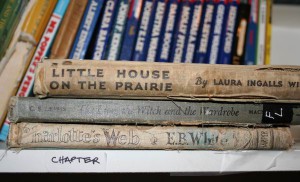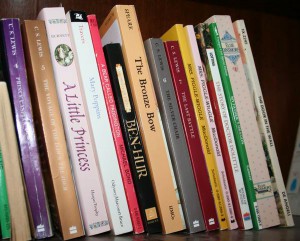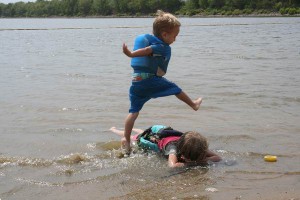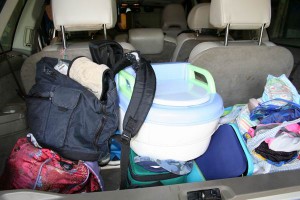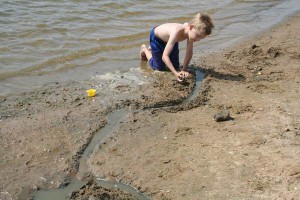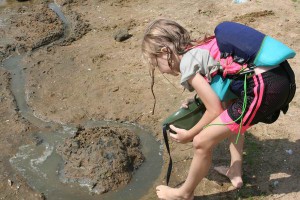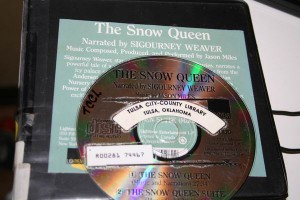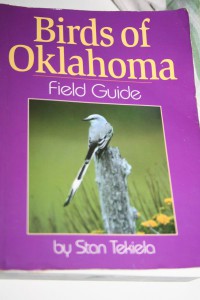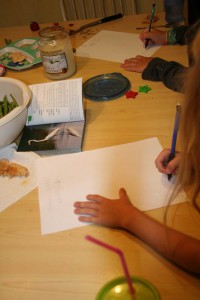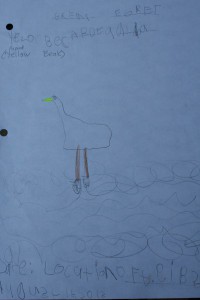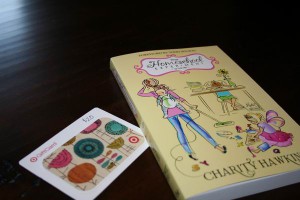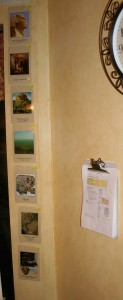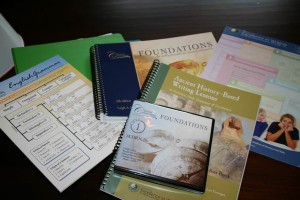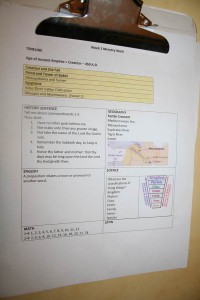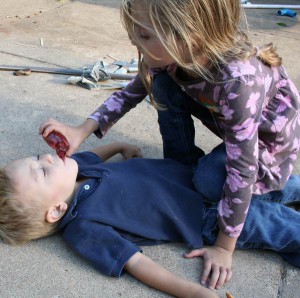
Lucy saving Edmund's life with her magical cordial
.
In
Part One, I shared my 5 real-life tips for reading chapter books. Here are the other five:
.
NOTE: Before I start opining about the wonders of reading aloud to your children, I just have to tell you that Narnia: Voyage of the Dawn Treader is killing me.
.
I tried to read a little tonight and things did not go well. Maybe it was the “Swedish pancakes” (rolled pancakes with sugar inside) the kids had for dinner; maybe they devoured secret hoards of espresso beans. All I know is—they were bouncing all over the place for the 20 minutes I read to them. I think we covered three pages.
And I skipped over long paragraphs of boringness.
I’m sure all the quirky jokes C.S. Lewis makes were amusing to kids at the time, or to adults now, but I’ve had to stop to explain nautical terms, what the British Consulate is, what “cheeky” and “chirruping” mean, and try to guess what “lodge a disposition” means. I would totally ditch the book if the kids hadn’t already seen the movie and decided it’s the best thing EVER. So we must soldier on. But I’m telling you, I’m going to
cut out a lot.
And I DO NOT recommend the later Narnia books (Any after 1 and 2) for kids under 10 or so. Feel free to disagree with me; I’m stickin’ with that. I’m changing our reading list to save the last two books for a few years from now.
Anyway, on to some real life reading tips, because I could use some…
AS YOU’RE READING
6. Answer vocabulary quickly and move on.
Most classic chapter books are going to have more ”rare words” and complex vocabulary; that’s part of their value. Usually I don’t stop to explain words unless my kids ask. “What does swift mean?” I’ll say, “Fast,” and read the sentence again with “fast” substituted. Many times they’ll figure it out because of context.
(But again, this is why picking a book at their level is important, because The Voyage of the Dawn Treader has so MUCH hard or British vocabulary that it’s exhuasting.)
7. Simplify (or summarize) difficult passages while reading if needed.
Ideally, complexity of sentences is a good thing. It teaches kids to listen and understand nuances. But when we get bogged down (like tonight), I adjust.
a. Make complex sentences simple. Some of the Voyage of the Dawn Treader sentences are ten lines long! I make the sentences shorter and simpler when I can.
b. Cut out long, complicated descriptions. Tonight I skipped over a few lengthy paragraphs on the boat layout. The kids don’t need to know that to follow the action. If they are losing interest, I skim forward to the next dialogue or action scene.
8. Make fun voices. I try to use creepy voices for the scary parts, or deep voices for kings or whatever. When I remember.
Audio books are great for this, if your kids can follow the plot. We LOVED the audio of the Little House books.
(The Narnia books are way too complicated for us to listen to the audio books so we’re reading those.)
AFTER READING
9. Encourage Imaginary Play.
We don’t act out the books in a formal way, but I might just plant the seed of an idea in their heads. We had friends over when we were reading The Long Winter and the kids were playing outside. I said, “Oooh, I think a storm is coming. You better get your hay in the barn and cattle inside!” After looking at me like I was nuts, the other children caught on quickly and they spent the next hour or so getting in crops.
When that friend came over months later, the first thing she wanted to do was get her crops into the barn!
This lets the kids learn about the situations, time, vocabulary, as well as helping them connect emotionally with the story and turn the characters into friends.
My kids often do this spontaneously and I just play along. If my daughter says she’s Lucy and her brother is Edmund, who am I to argue? (The picture at the top is my daughter pretending to be Lucy and nurse “Edmund” back to life. This is an almost daily occurance.)
10. Answer their questions. Sometimes I ask them questions later, but more often they learn by asking questions. Lots and lots of questions.
I realized one day that if I did nothing else but answer all my children’s questions they’d get a very in-depth and well-rounded education. I try, as much as possible, to answer their questions with thoughtful, honest answers. (When it doesn’t suck the life out of me with the volume of the questions. Tonight, I kid you not, I think my son asked about twenty questions ON ONE PAGE. And I just don’t know that much about the British Consulate or boatswains.)
The question is the teachable moment. That’s the real lesson, not whatever’s on the page.
“Yes, but what I don’t understand,” my daughter said the other day in the middle of Prince Caspian, “is how God was there before anything. How could he be?”
We talked about it. Instead of being annoyed that we spent 10 minutes off topic, I thought, wow, this really is wonderful literature. It’s getting them thinking about the important things.
So, let’s do it together, shall we? Let’s just pick an interesting book and start. It may be slow going. It may take ten times longer than we thought it would, and involve more discussions of British slang than we ever thought possible, but let’s do it anyway. Let’s read these rich books to our children.
As these courageous, noble, strong characters come alive to our children, may they awaken something in their hearts. And in ours as well.
Our Favorite Chapter Books So Far
The comments to Part One and the Chapter Book Challenge had lots of great book ideas and reading tips. Be sure to check those out if you haven’t. Thank you all for wonderful ideas! (Did anyone else have the same trouble with Narnia or is it just me?)
Ages 5 and up
- Little House Books
- Pippi Longstocking (Kids loved it; she can be disrespectful to adults so we discussed that.)
- Charlie and the Chocolate Factory
- Charlotte’s Web
- The Hundred Dresses
- Pinnochio
- (One of my son’s favorites was Danger at Quicksand Swamp. Not a classic, not particularly well-written, but a great boy adventure story!)
Ages 8 and up
- Narnia books #1 and #2 (all others I’d say wait until they are at least age 10)
- The Whipping Boy
- Historical: Pilgrim Boy, Squanto, Childhood of Famous Americans (we did George Washington and Einstein), Sign of the Beaver
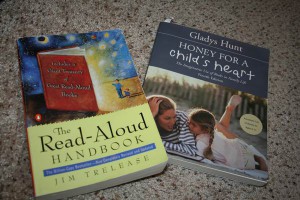
These are my two favorite books about reading aloud, and they have great book lists in them. Honey for a Child’s Heart by Gladys Hunt, and The Read-Aloud Handbook by Jim Trelease. Your library might have both.
Also, Ambleside online and the Sonlight website are great resources.
What did I leave off? What are your favorites for ages 5-10?
Also, a note: a big thank you to Carey Jane Clark, author of After the Snow Falls, for her kind review of The Homeschool Experiment: a novel last weekend:
“When it comes to novels, I want to be awed by the way the author puts words together, and I was not disappointed. But perhaps the most disarming thing about this book is the main character, Julianne Miller, and her very real life. Any mother who’s ever compared herself to others (and what mother hasn’t?) will relate to this down-to-earth character.” Read Carey’s whole review on her blog >
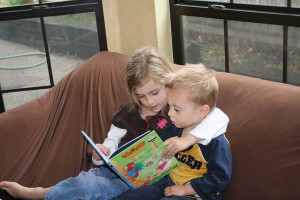 I am working on a small resource to give for free to those who sign up on my site.
I am working on a small resource to give for free to those who sign up on my site.



